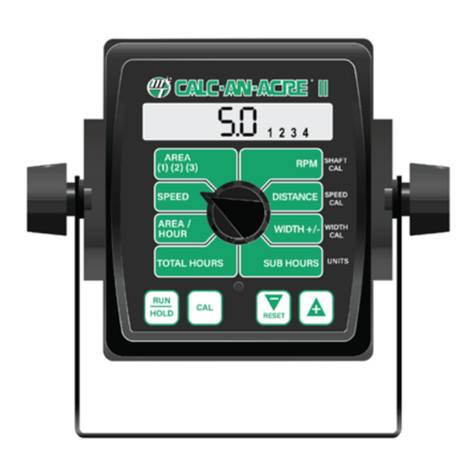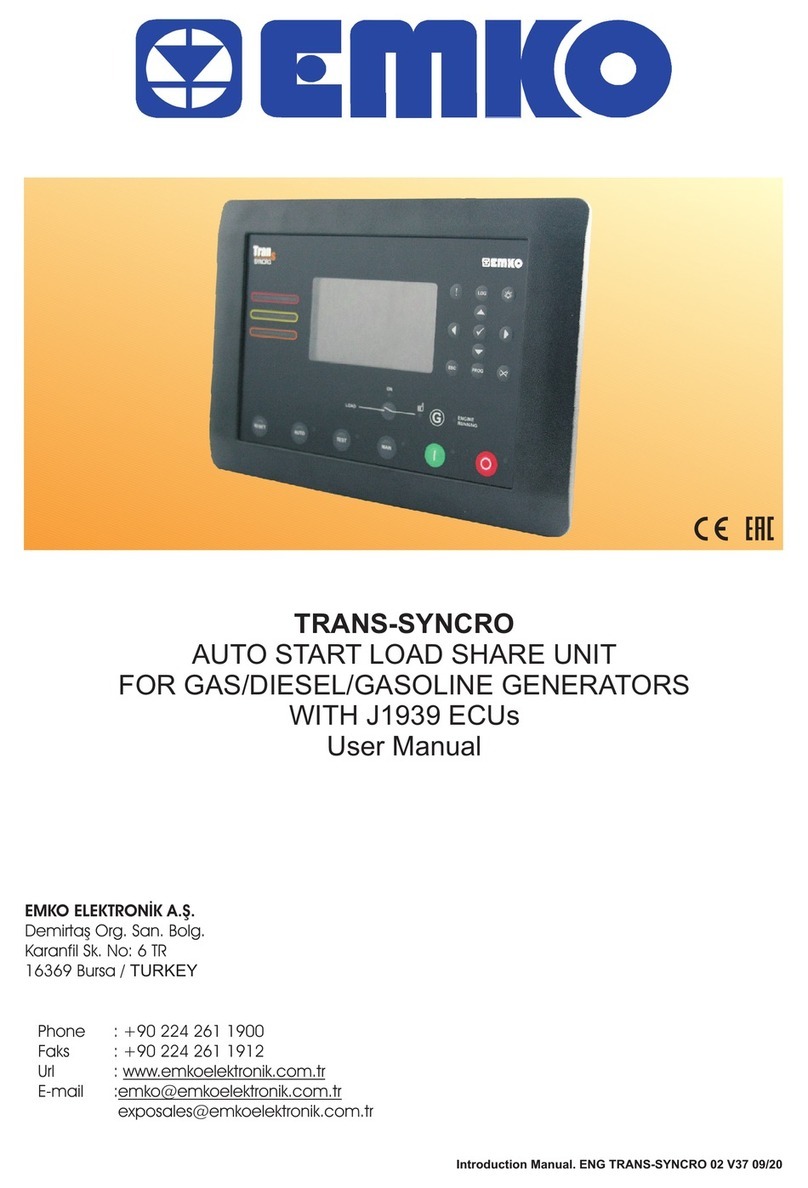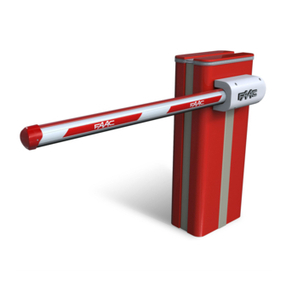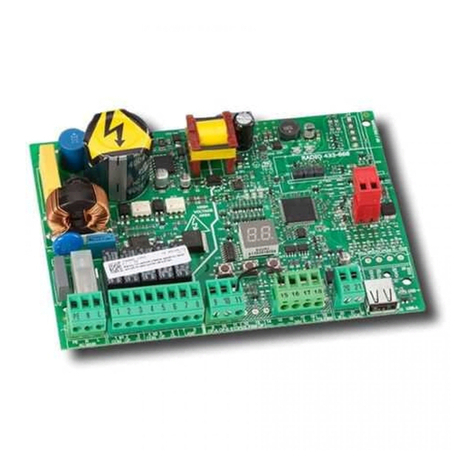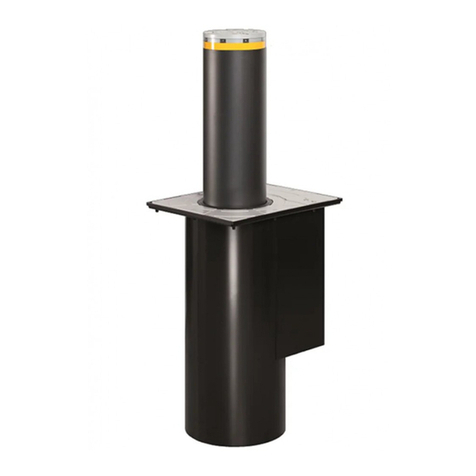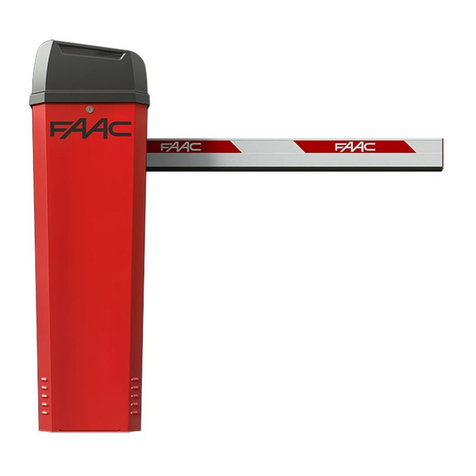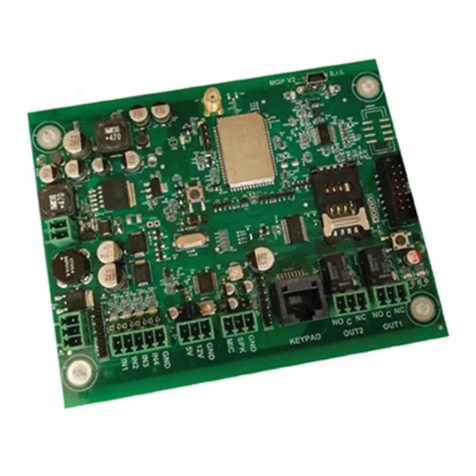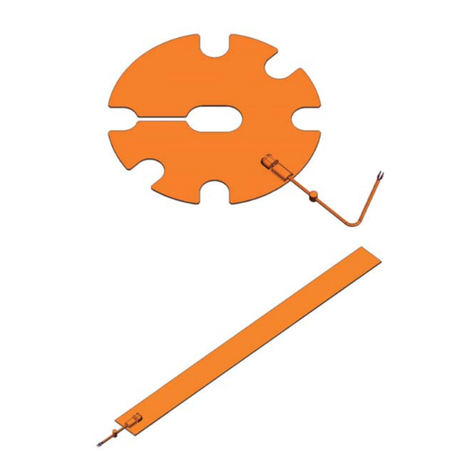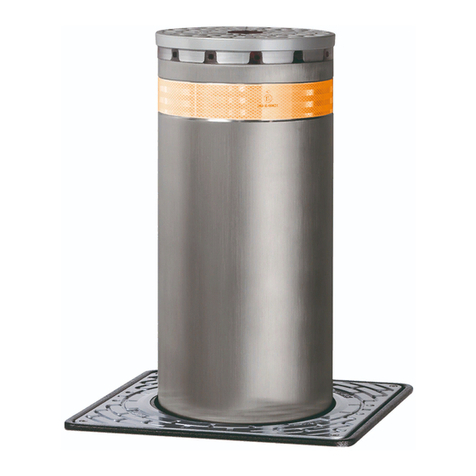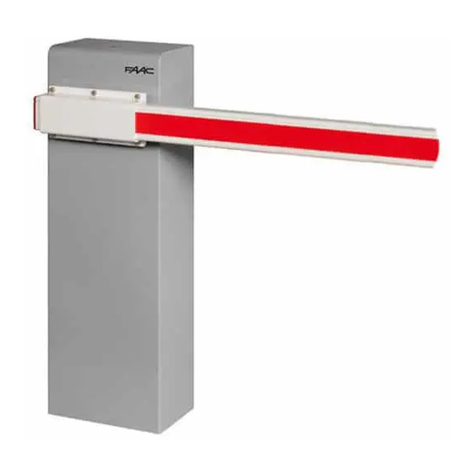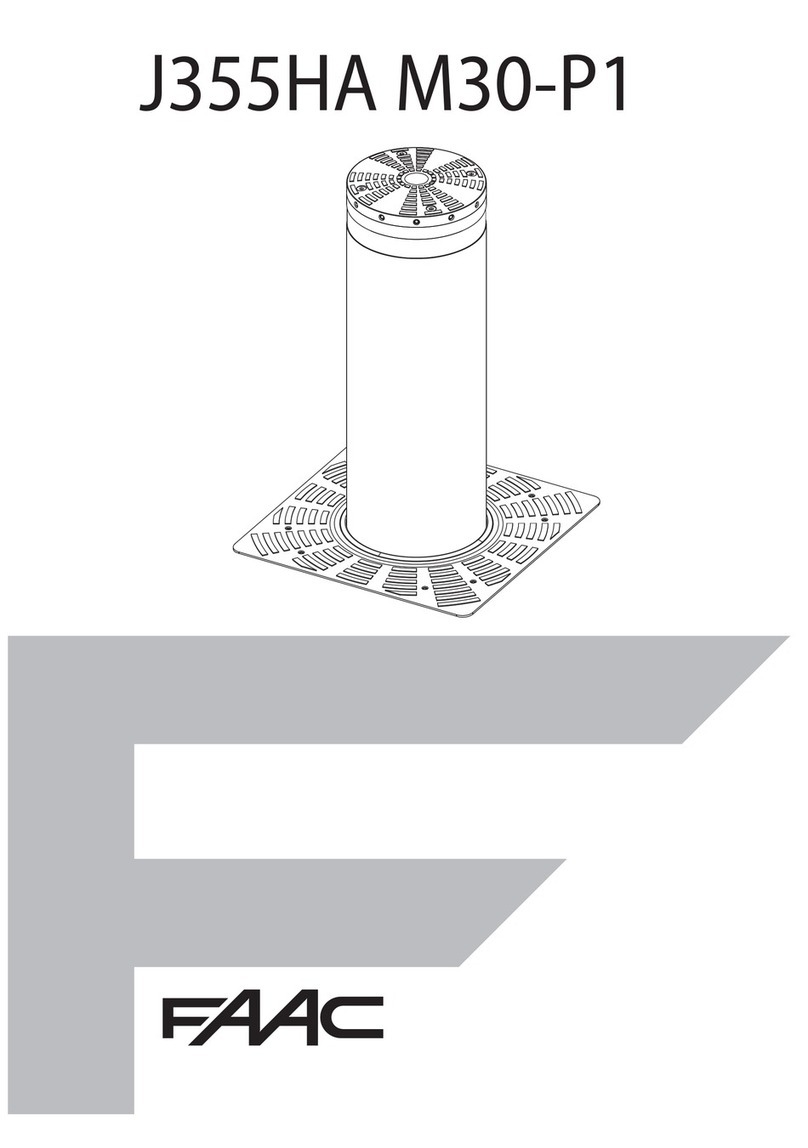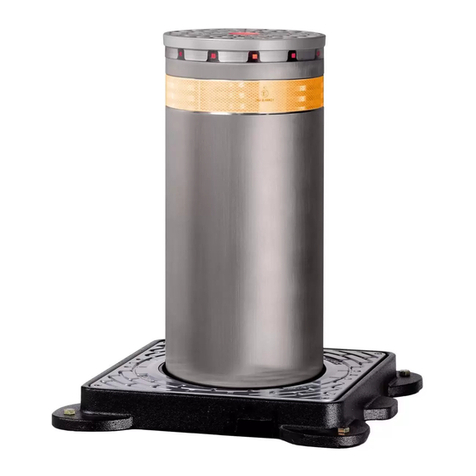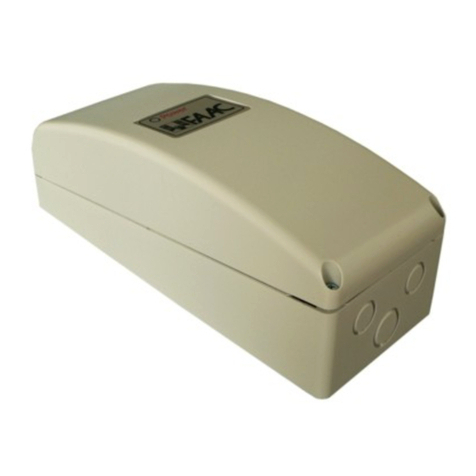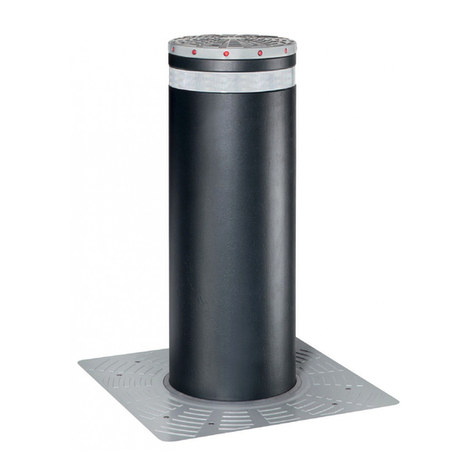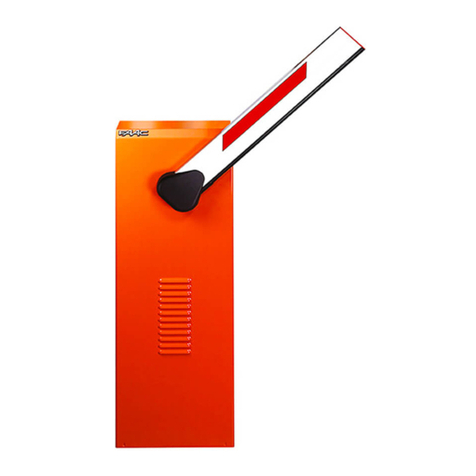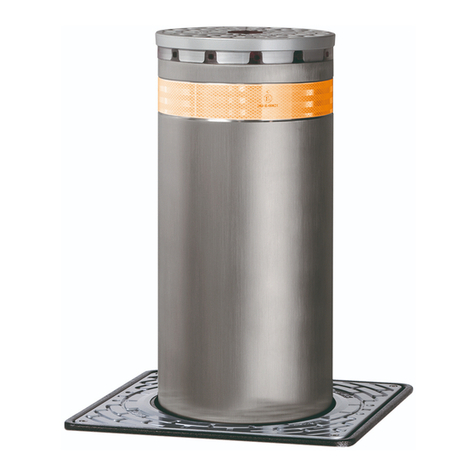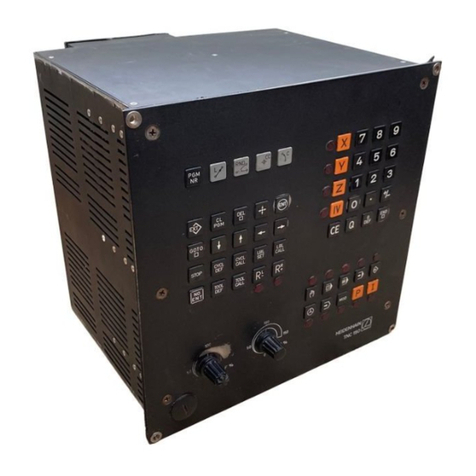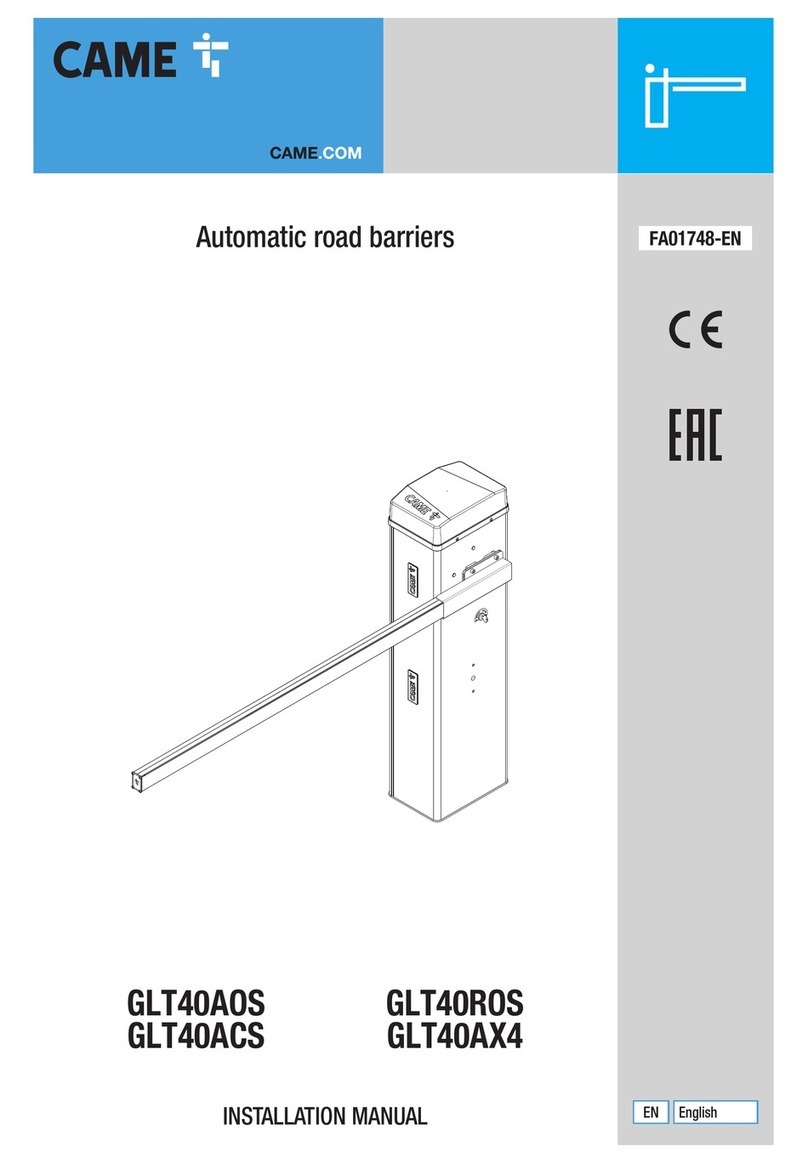
8
ENGLISH ENGLISH
EC MACHINE DIRECTIVE COMPLIANCE DECLARATION
(DIRECTIVE 89/392 EEC, APPENDIX II, PART B)
Manufacturer: FAAC S.p.A.
Address: Via Benini, 1 40069 - Zola Predosa BOLOGNA-ITALY
Hereby declares
that: the 615 automation system
• is intended to be incorporated into machinery, or to be assembled with other machinery to constitute
machinery in compliance with the requirements of Directive 89/392 EEC, and subsequent amendments 91/
368 EEC, 93/44 EEC and 93/68 EEC;
• complies with the essential safety requirements in the following EEC Directives:
73/23 EEC and subsequent amendment 93/68 EEC.
89/336 EEC and subsequent amendments 92/31 EEC and 93/68 EEC.
and furthermore declares that unit must not be put into service until the machinery into which it is incorporated
or of which it is a component has been identified and declared to be in conformity with the provisions of
Directive 89/392 EEC and subsequent amendments enacted by the national implementing legislation.
Bologna, 1 January 2000
Managing Director
A. Bassi
IMPORTANT NOTICE FOR THE INSTALLER
GENERAL SAFETY REGULATIONS
1) WARNING! FAAC strongly recommends to follow these instructions
literally for the safety of persons. Improper installation or misuse of the
product will cause very serious damages to persons.
2) Packaging material (plastic, polystyrene etc.) is a potential hazard and
must be kept out of reach of children.
3) Read the instructions carefully before installing the product.
4) Keep these instructions for future reference.
5) This product has been designed and manufactured only for the use stated
in this manual. Any other use not expressly set forth will affect the reliability
of the product and/or could be source of hazard.
6) FAAC S.p.A. cannot be held responsible for any damage caused by
improper use or different from the use for which the automation system is
destined to.
7) Do not use this device in areas subject to explosion: the presence of
flammable gas or fumes is a serious hazard.
8) The system must be constructed in compliance with the following
Standards: EN12604, EN12605, EN12453,EN12445 with the exception of
vehicles only systems which, however, must be provided with signs
specifying use for vehicles only.
For non-EU countries, to obtain an adequate level of safety, the Standards
mentioned above must be observed, in addition to national legal
regulations.
9) FAAC cannot be held responsible for failure to observe technical
standards in the construction of gates and doors, or for any deformation
of the gates which may occur during use.
10) Before carrying out any operations, turn off the system’s main switch.
11) An omnipower switch shall be provided for the installation with an opening
distance of the contacts of 3 mm or more. Alternatively, use a 6A
thermomagnetic breaker with multi-pole switching.
12) Ensure that there is a differential switch up-line of the electrical system,
with a trip threshold of 0.03A.
13) Check that the earthing plant is in perfect condition and connect it to the
metallic parts. Also earth the yellow/green wire of the operator.
14) The automation is fitted with an anti-crush safety system that is a torque
control device. In any case, further safety devices shall be installed.
15) The safety devices (e.g. photocells, safety edges, etc.) protect areas
wherethere is a mechanical movement hazard,e.g. crushing,entrapment
and cutting.
16) Each installation must be fitted with at least one fashing light (e.g. FAAC
LAMP, MINILAMP etc) as well as a warning plate suitably fixed to the gate,
besides the safety devices as per point 15. above.
17) FAAC cannot be held responsible regarding safety and correct
functioning of the automation in the event that parts other than FAAC
original parts are used.
18) Use only FAAC original spare parts for maintenance operations.
19) Do not carry out any modifications to automation components.
20) The installer must supply all information regarding manual operation of the
system in the event of an emergency and provide the end-user with the
leaflet attached to the product.
21) Keep out of persons when the product is in operation.
22) Keep out of reach of children the remote radio controls and any control
devices. The automation could be operated unintentionally.
23) The end-user must avoid any attempt to repair or adjust the automation
personally. These operations must be carried out exclusively by qualified
personnel.
24) What is not explicitly stated in these instructions is not permitted.



